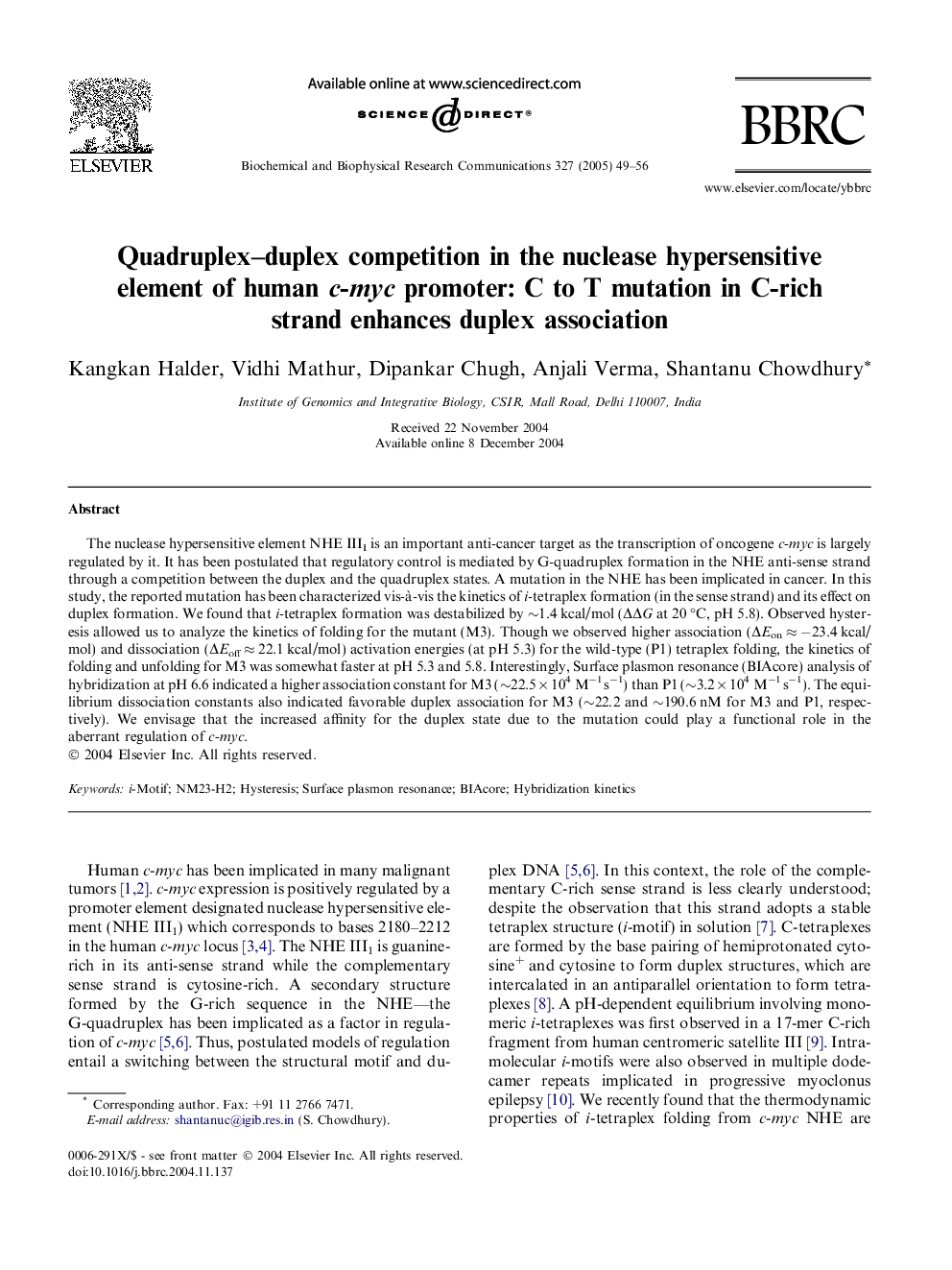| Article ID | Journal | Published Year | Pages | File Type |
|---|---|---|---|---|
| 10771574 | Biochemical and Biophysical Research Communications | 2005 | 8 Pages |
Abstract
The nuclease hypersensitive element NHE IIII is an important anti-cancer target as the transcription of oncogene c-myc is largely regulated by it. It has been postulated that regulatory control is mediated by G-quadruplex formation in the NHE anti-sense strand through a competition between the duplex and the quadruplex states. A mutation in the NHE has been implicated in cancer. In this study, the reported mutation has been characterized vis-à -vis the kinetics of i-tetraplex formation (in the sense strand) and its effect on duplex formation. We found that i-tetraplex formation was destabilized by â¼1.4 kcal/mol (ÎÎG at 20 °C, pH 5.8). Observed hysteresis allowed us to analyze the kinetics of folding for the mutant (M3). Though we observed higher association (ÎEon â â23.4 kcal/mol) and dissociation (ÎEoff â 22.1 kcal/mol) activation energies (at pH 5.3) for the wild-type (P1) tetraplex folding, the kinetics of folding and unfolding for M3 was somewhat faster at pH 5.3 and 5.8. Interestingly, Surface plasmon resonance (BIAcore) analysis of hybridization at pH 6.6 indicated a higher association constant for M3 (â¼22.5 Ã 104 Mâ1 sâ1) than P1 (â¼3.2 Ã 104 Mâ1 sâ1). The equilibrium dissociation constants also indicated favorable duplex association for M3 (â¼22.2 and â¼190.6 nM for M3 and P1, respectively). We envisage that the increased affinity for the duplex state due to the mutation could play a functional role in the aberrant regulation of c-myc.
Related Topics
Life Sciences
Biochemistry, Genetics and Molecular Biology
Biochemistry
Authors
Kangkan Halder, Vidhi Mathur, Dipankar Chugh, Anjali Verma, Shantanu Chowdhury,
